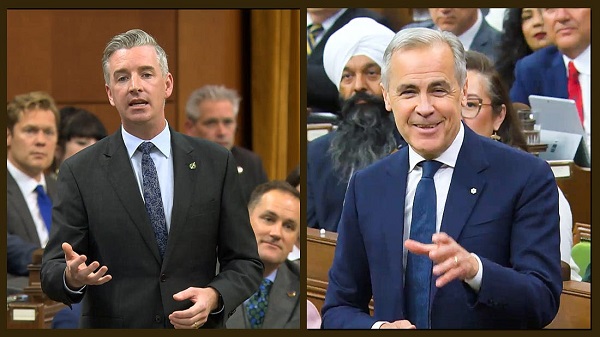Business
Patriotic Millionaires concept of tax ‘fairness’ ignores tax facts in Canada

From the Fraser Institute
By Jake Fuss and Tegan Hill
A group of wealthy Canadians called the “Patriotic Millionaires” recently asked governments in Canada to increase the amount of taxes they pay to “ensure greater fairness” in the system. In particular, the group is calling for a wealth tax and higher taxes on capital gains.
Unfortunately, the Patriotic Millionaires (whose motto is “Tax the rich!”) seem to misunderstand the current distribution of taxes paid by different income groups in Canada and the economic consequences of raising taxes.
The fixation on tax “fairness” (which the Patriotic Millionaires never actually define) is not new in Canada. It was a constant focus of the Trudeau government, which decided to increase “fairness” by increasing the top federal personal income tax rate from 29 per cent to 33 per cent in 2016 and proposing to raise taxes on capital gains in 2024.
These policies, like the Patriotic Millionaires, ignored basic facts about taxes. According to a recent study, the top 20 per cent of income-earning families in Canada paid 54.2 per cent of all federal, provincial and local taxes while earning less than half of the country’s total income (46.4 per cent). These families are the only income group in Canada that pay a larger share of taxes than their share of income.
In contrast, the remaining 80 per cent of Canadian families pay less in taxes than their share of total income. For example, the bottom 20 per cent of income-earning families pay 2.0 per cent of total taxes while earning 5.0 per cent of total income.
Why? Because Canada, like most advanced economies, has a progressive income tax system where government taxes individuals at increasingly higher rates as their income rises. For example, the marginal federal tax rate is 15 per cent on individual incomes up to $57,375 but more than double that rate (33 per cent) on income that exceeds $253,414.
According to the Patriotic Millionaires, Canada needs a “wealth tax,” which taxes a person’s net wealth. But time and time again, wealth taxes have failed to deliver the promised results of proponents. Eight European countries that experimented with wealth taxes have since abandoned them because they were expensive to administer, raised little revenue and imposed enormous costs on their economies. In particular, wealth taxes discourage investment, which is needed to broadly raise living standards and improve prosperity, by prompting people to move their assets away from productive investments (e.g. new businesses) to investments that may be exempt from the tax.
So, if Ottawa implemented a wealth tax, we’d likely see a reallocation of investment away from startups and towards housing (assuming housing remains exempt from the tax). Consequently, companies and investors would have less resources to invest in the technology, machinery and equipment that improve productivity, create jobs and drive higher living standards, particularly for average workers.
The Patriotic Millionaires also want to raise taxes on capital gains, which would have similar negative effects by making it more expensive for individuals and businesses to invest in Canada, leading to stagnant wages and living standards for Canadians.
The Patriotic Millionaires are misguided in their claims about “fairness” in the tax system. High-income earners already pay the majority of all taxes in Canada, and proportionality is one of the only objective measures of fairness with respect to the tax burden. Their policy proposals, if enacted by government, would only harm the economy rather than help it. That wouldn’t be fair to Canadian workers.
Business
Carney’s Energy Mirage: Why the Prospects of Economic Recovery Remain Bleak
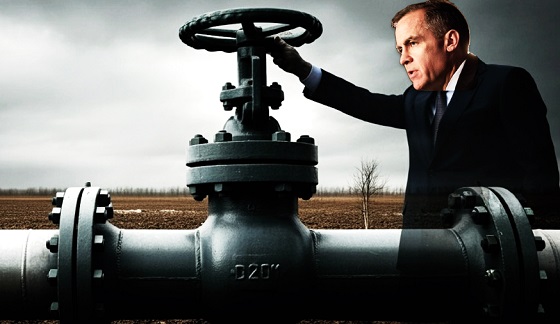
 By Gwyn Morgan
By Gwyn Morgan
Gwyn Morgan argues that Mark Carney, despite his polished image and rhetorical shift on energy, remains ideologically aligned with the Trudeau-era net-zero agenda that stifled Canada’s energy sector and economic growth. Morgan contends that without removing emissions caps and embracing real infrastructure investment, Canada’s recovery will remain a mirage — not a reality.
Pete Townshend’s famous lyrics, “Meet the new boss / Same as the old boss,” aptly describe Canada’s new prime minister. Touted as a fresh start after the Justin Trudeau years, Mark Carney has promised to turn Canada into a “clean and conventional energy superpower.” But despite the lovey-dovey atmosphere at Carney’s recent meeting with Canada’s premiers, Canadians should not be fooled. His sudden apparent openness to new energy pipelines masks a deeper continuity, in my opinion: Carney remains just as ideologically committed to net-zero emissions.
Carney’s carefully choreographed scrapping of the consumer carbon tax before April’s election helped reduce gasoline prices and burnished his centrist image. In fact, he simply moved Canada’s carbon taxes “upstream”, onto manufacturers and producers, where they can’t be seen by voters. Those taxes will, of course, be largely passed back onto consumers in the form of higher prices for virtually everything. Many consumers will blame “greedy” businesses rather than the real villain, even as more and more Canadian companies and projects are rendered uncompetitive, leading to further reductions in capital investment, closing of beleaguered factories and facilities, and lost jobs.
This sleight-of-hand is hardly surprising. Carney spent years abroad in a career combining finance and eco-zealotry, co-founding the Glasgow Financial Alliance for Net Zero (GFANZ) and serving as the UN’s Special Envoy for Climate Action and Finance. Both roles centred on pressuring institutions to stop investing in carbon-intensive industries – foremost among them oil and natural gas. Now, he speaks vaguely of boosting energy production while pledging to maintain Trudeau’s oil and natural gas emissions cap – a contradiction that renders new pipeline capacity moot.
Canada doesn’t need a rhetorical energy superpower. It needs real growth. Our economy has just endured a lost decade of sluggish overall growth sustained mainly by a surging population, declining per-capita GDP and a doubling of the national debt. A genuine recovery requires the kind of private-sector capital investment and energy infrastructure that Trudeau suppressed. That means lifting the emissions cap, clearing regulatory bottlenecks and building pipelines that connect our resources to global markets.
We can’t afford not to do this. The oil and natural gas industry’s “extraction” activities contribute $70 billion annually to Canada’s GDP; surrounding value-added activities add tens of billions more. The industry generates $35 billion in annual royalties and supports 900,000 direct and indirect jobs. Oil and natural gas also form the backbone of Canada’s export economy, representing nearly $140 billion per year, or about 20 percent of our balance of trade.
Yet Quebec still imports oil from Algeria, Saudi Arabia and Nigeria because Ottawa won’t push for a pipeline connecting western Canada’s producing fields to Quebec and the Maritimes. Reviving the cancelled Energy East pipeline would overcome this absurdity and give Canadian crude access to European consuming markets.
Carney has hinted at supporting such a project but refuses to address the elephant in the room: without scrapping the emissions cap, there won’t be enough production growth to justify new infrastructure. So pipeline CEOs shouldn’t start ordering steel pipe or lining up construction crews just yet.
I continue to believe that Carney remains beholden to the same global green orthodoxy that inspired Trudeau’s decade of economic sabotage. While the United States shifts course on climate policy, pulling out of the Paris Accord, abandoning EV mandates and even investigating GFANZ itself, Canada is led by a man at the centre of those systems. Carney’s internationalist career and personal life – complete with multiple citizenships and a spouse known for environmental activism – underscore how far removed he is from ordinary Canadians.
Carney’s version of “clean energy” also reveals his bias. Despite the fact that 82 percent of Canada’s electricity already comes from non-greenhouse-gas-emitting sources like hydro and nuclear, Carney seems fixated on wind and solar-generated power. These options are less reliable and more expensive – though more ideologically fashionable. To climate zealots, not all zero-emission energy is created equal.
Even now, after all the damage that’s been done, Canada has the potential to resume a path to prosperity. We are blessed with vast natural resources and skilled workers. But no economy can thrive under perpetual policy uncertainty, regulatory obstruction and ideological hostility to its core industries. Energy projects worth an estimated $500 billion were blocked during the Trudeau years. That capital won’t return unless there is clarity and confidence in the government’s direction.
Some optimists argue that Carney is ultimately a political opportunist who may shift pragmatically to boost the economy. But those of us who have seen this movie before are sceptical. During my time as a CEO in the oil and natural gas sector, I witnessed Justin’s father Pierre Trudeau try to dismantle our industry under the guise of progress. Carney, despite or perhaps because of his polish, may be the most dangerous of the three.
The original, full-length version of this article was recently published in C2C Journal.
Gwyn Morgan is a retired business leader who was a director of five global corporations.
Business
Meta inks 20 year deal for nuclear power
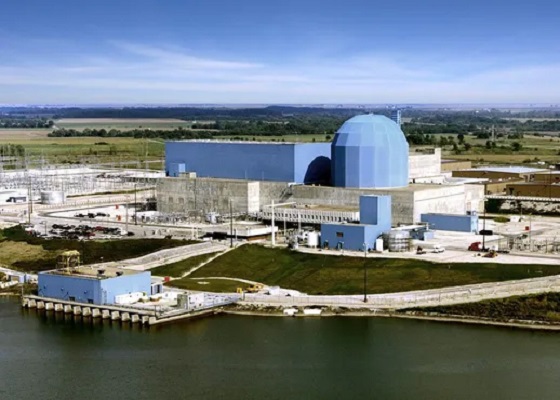
 MxM News
MxM News
Quick Hit:
Meta has signed a 20-year agreement to purchase nuclear energy from Constellation Energy’s Clinton Clean Energy Center in Illinois. The deal not only saves a struggling nuclear facility from potential shutdown but also signals Meta’s entry into the nuclear space—a direction long championed by President Donald Trump as part of his ambitious pro-American energy strategy. While big tech often aligns itself with global climate pledges, Meta’s move reveals a rare alignment with a policy rooted in national energy security and self-sufficiency.
Key Details:
-
Meta will purchase 1.1 gigawatts of nuclear energy annually starting in 2027, enough to power a mid-sized city.
-
The Clinton Clean Energy Center’s future was in jeopardy until this deal; Meta’s backing enables continued operation and potential expansion.
-
President Trump has signed executive orders aiming to quadruple U.S. nuclear output by 2050, a vision that aligns with Meta’s pivot to nuclear energy.
Diving Deeper:
In a major shift, Meta has inked a two-decade-long deal to buy all the nuclear energy output from Constellation Energy’s Clinton Clean Energy Center. This move secures approximately 1.1 gigawatts of carbon-free power starting in 2027—effectively salvaging a plant that had been teetering on the brink of early closure due to the expiration of state-backed subsidies.
Without Meta’s commitment, the Clinton facility, which has relied on zero-emission credits since 2017, would likely have shut down. Instead, the plant now faces a renewed lease on life and even a proposed expansion of its output by 30 megawatts. While the energy will feed into the regional grid and not directly power Meta’s servers, the tech firm says this still furthers its broader goal of sourcing 100% clean electricity.
Meta’s head of global energy, Urvi Parekh, acknowledged the broader significance of the decision. “We are proud to help keep the Clinton plant operating for years to come and demonstrate that this plant is an important piece to strengthening American leadership in energy,” she said.
That sentiment aligns closely with the vision President Donald Trump outlined in a recent series of executive orders aimed at resurrecting U.S. nuclear dominance. Trump’s directives target a sweeping overhaul of the Nuclear Regulatory Commission, investment in small modular reactors (SMRs), and domestic sourcing of nuclear fuel—policies designed to reverse decades of regulatory stagnation and reliance on foreign energy.
The Meta-Constellation agreement is part of a broader trend among tech titans leaning into nuclear energy. Google has pledged to fund three new nuclear sites and partnered with SMR developer Kairos Power. Amazon, for its part, has invested more than $500 million into SMR projects and bought a nuclear-powered data center campus in March.
However, Meta’s deal with Constellation is its first concrete nuclear investment, representing not just a bet on energy security but also a nod to the Trump administration’s approach. President Trump has repeatedly emphasized the role nuclear must play if America is to achieve true energy independence and withstand the geopolitical threats posed by nations like China, Russia, and Iran.
Constellation CEO Joe Dominguez noted that “supporting the relicensing and expansion of existing plants is just as impactful as finding new sources of energy.” That philosophy mirrors the Trump energy doctrine—pragmatic, forward-looking, and unapologetically pro-American.
Notably, Constellation is also weighing a proposal to build an SMR at the Clinton site, pending regulatory approval. It’s a bold prospect that could align seamlessly with President Trump’s executive mandates to cut red tape and accelerate innovation in the nuclear space.
-
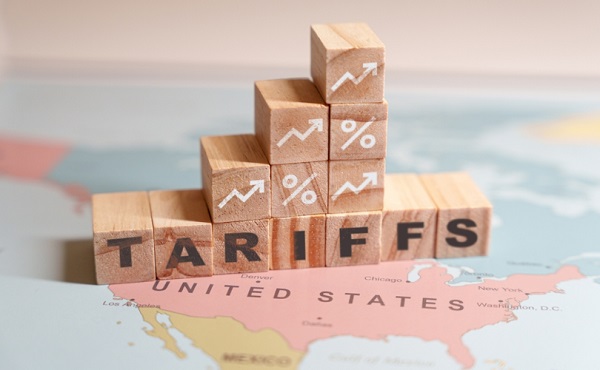
 Business2 days ago
Business2 days agoSobering reality check – Trump is right: Canada’s economy can’t survive a fair trade agreement with the US
-

 Automotive2 days ago
Automotive2 days agoCanada’s EV house of cards is close to collapsing
-

 Business18 hours ago
Business18 hours agoMeta inks 20 year deal for nuclear power
-

 Crime18 hours ago
Crime18 hours agoBoulder ‘terror’ suspect’s family in ICE custody, pending deportation
-

 Crime2 days ago
Crime2 days agoMexican Cartels Expanding Operations in Canada, Using Indigenous Reserves as Factory Hubs
-
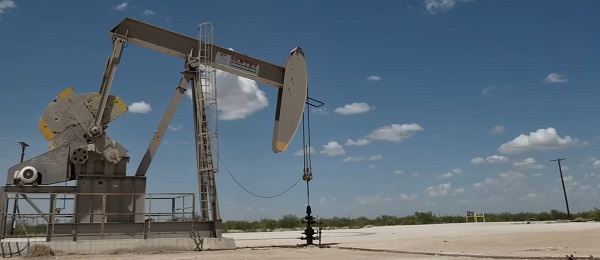
 Energy18 hours ago
Energy18 hours agoTrump Keeps Focus On America’s Energy Production
-

 Alberta15 hours ago
Alberta15 hours agoAlberta Sports Hall of Fame to Induct Class of 2025
-

 Business4 hours ago
Business4 hours agoCarney’s Energy Mirage: Why the Prospects of Economic Recovery Remain Bleak








